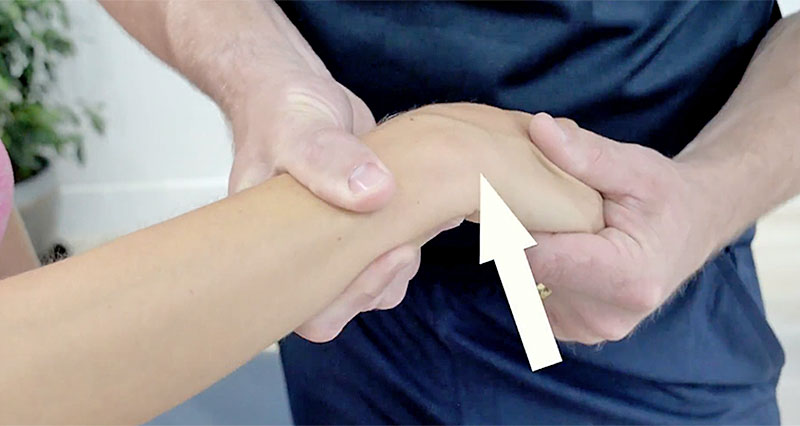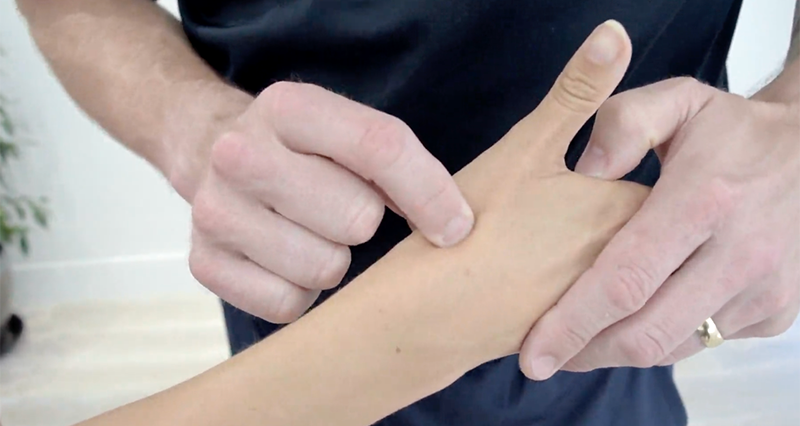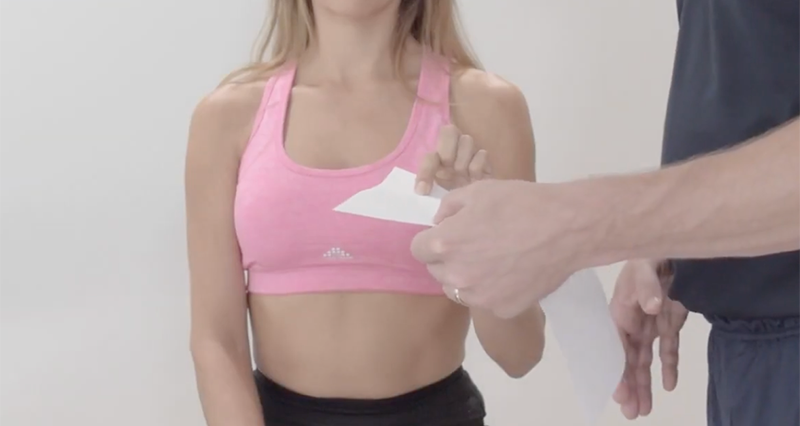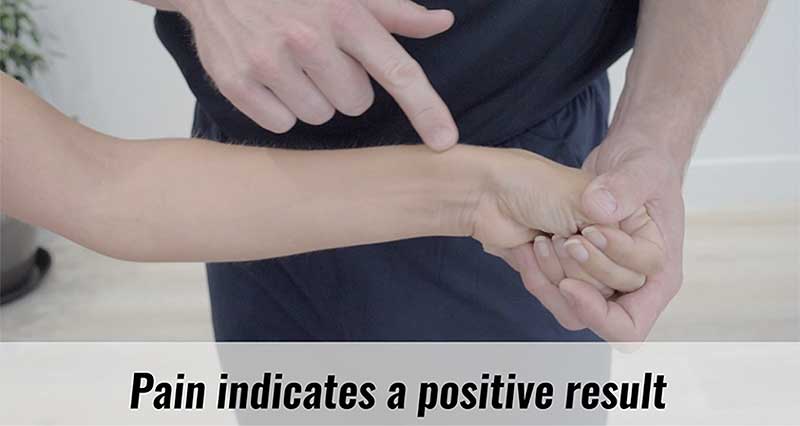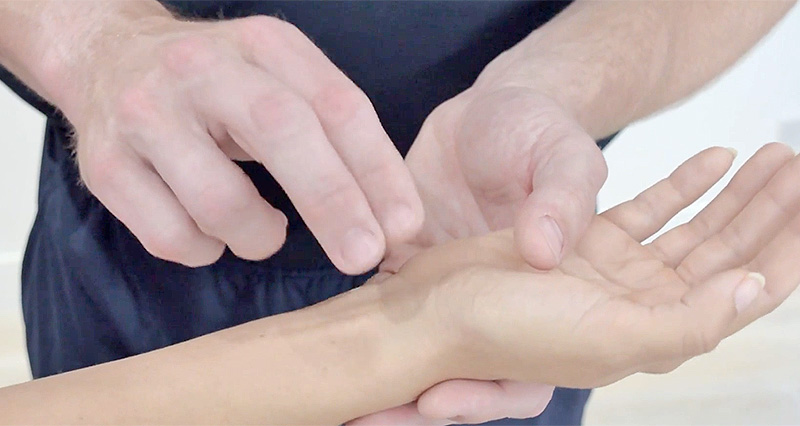What is the Ulnar Compression Grind Test?
The Ulnar Compression Grind Test diagnoses TFCC tears or injuries in the wrist. This test focuses on the TFCC, which supports carpal bones and stabilises the wrist’s ulnar side. The TFCC is vital for wrist movement and load distribution, especially during gripping.
What is a TFCC tear?
A TFCC tear is an injury to the triangular fibrocartilage complex found in the wrist. Either sudden trauma or overuse causes it.
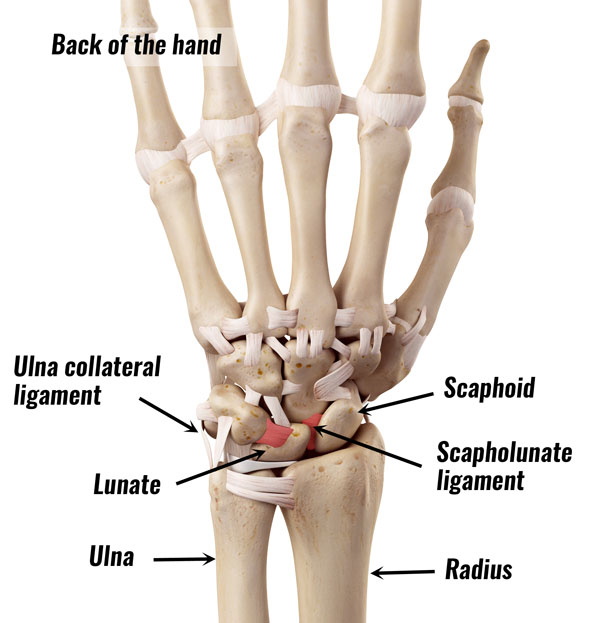
How to perform the Ulna Compression Grind Test
Seat or stand the patient with their forearm neutral and elbow bent at about 90 degrees. Secure the patient’s hand, stabilising the forearm with your other hand. Apply an axial load to the forearm and rotate the hand and wrist simultaneously. This action compresses the TFCC between the ulnar head and the carpus.
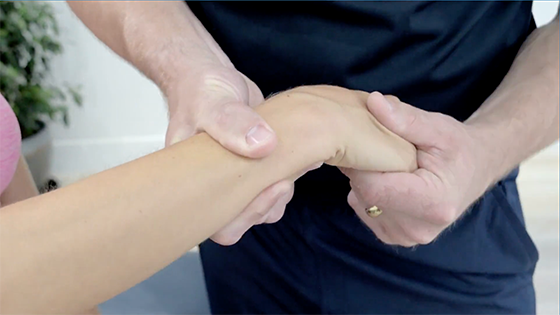
How do I know if it’s positive?
A positive test occurs if this manoeuvre reproduces the patient’s symptoms, like pain or clicking on the ulnar side of the wrist, suggesting a TFCC injury or tear.
The Ulnar Compression Grind Test, while indicative of TFCC injuries, is not definitive on its own. Its effectiveness varies, and it should complement other diagnostic approaches, including thorough history taking, physical examination, and imaging studies like MRI, for a full evaluation.
TFCC injuries often result from trauma, wear, or repetitive motion and are common in athletes involved in wrist-intensive sports, like tennis or gymnastics. As a result, ensuring an accurate diagnosis and pursuing effective treatment of TFCC injuries become crucial steps in restoring wrist functionality and alleviating pain.

